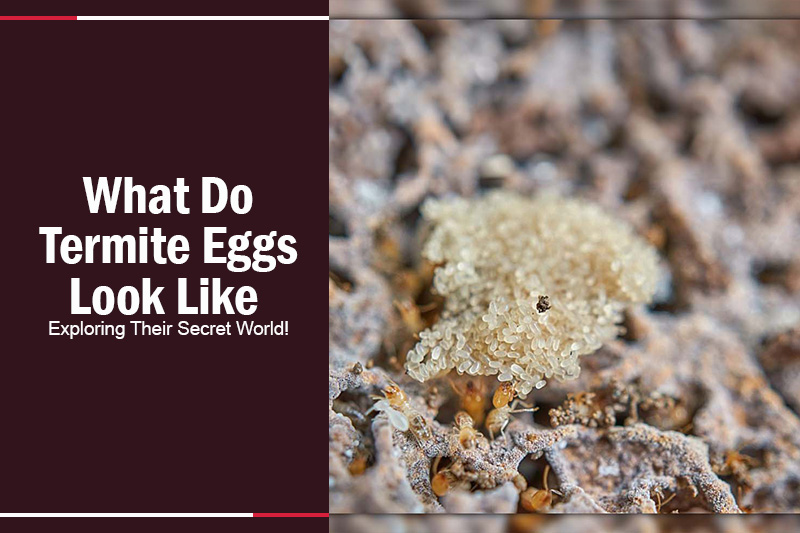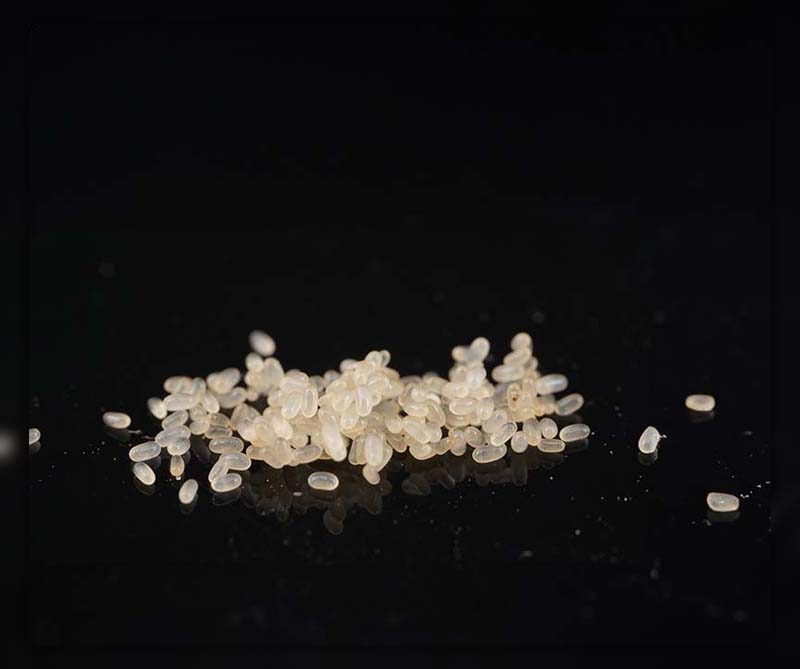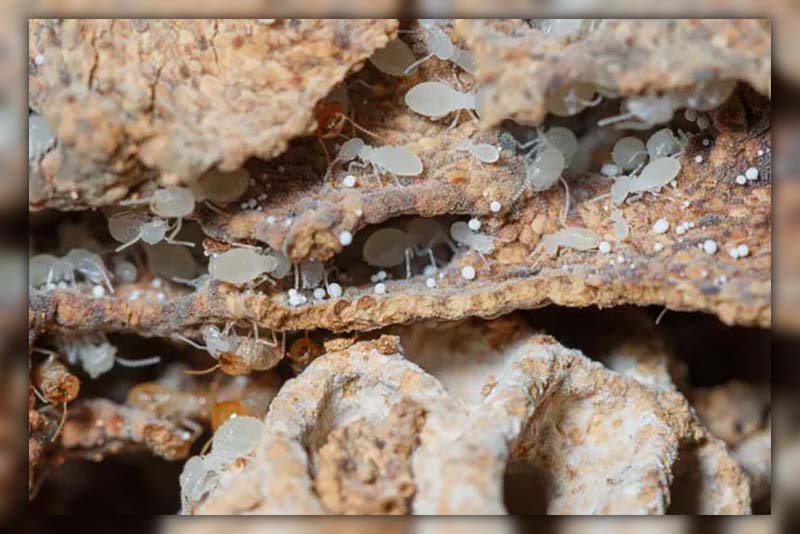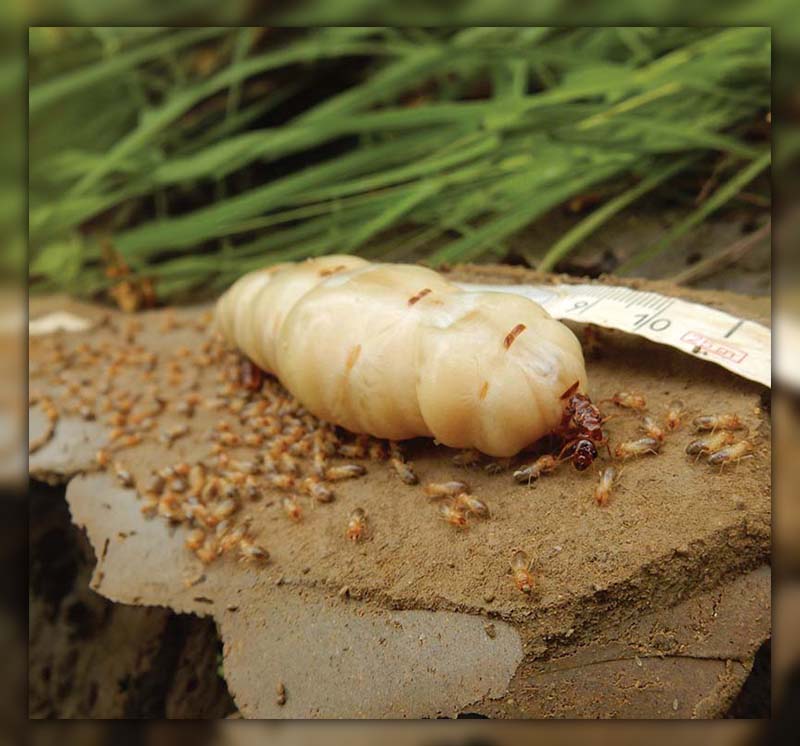Learn ‘What do termite eggs look like‘ and gain essential tips for identifying and combating infestations.

1. What does Termite Eggs look like?
Although termites vary in shape and size, their eggs tend to look similar across different types.
1. Shape of Terminate Eggs
Termite eggs are small, shiny, and white, resembling tiny jelly beans with a smooth, somewhat clear surface. Unlike eggs of bed bugs or other insects, they don’t have any noticeable marks or dents.
These eggs are laid in big groups, each having hundreds or thousands of these small eggs. These groups look like tiny piles of white powder, similar to very small caviar.
2. Dimensions of Termination Eggs
A typical termite egg is about 0.5 mm in size. When first laid, they’re around 0.25 mm and grow to 1.0 mm as the baby termite inside gets bigger. They’re so small that it’s hard to see them with just your eyes.
The size of a group of termite eggs depends on the type of termite and how many eggs the queen lays. Queens of smaller termite types, like the subterranean and Formosan termites, lay thousands of eggs, leading to huge colonies with millions of termites.
3. Color of Terminate Eggs
Termite eggs are usually pale, a bit see-through, and most often white or yellow, with white being more usual. The color might change a bit based on when they were laid; the
first eggs from a queen are more yellow, but later ones are more white or off-white. Sometimes, you might see darker round shapes in pictures of termite eggs.
These are called “termite balls,” a type of fungus that looks like eggs and steals food meant for the termite babies. These balls can be white, yellow, orange, or brown.

2. Where can you find Termite Eggs?
Termite eggs are usually hidden deep inside their nests, where they are guarded by the queen and worker termites.
Subterranean termites make their nests under the ground, so their eggs are often found between 4 to 18 inches beneath the soil surface.
Drywood termites, however, live inside wood. This means their eggs can be located in places like dead tree branches, wooden beams, outdoor wooden decks, or even inside wooden furniture.

3. How to kill Termite Eggs?
To deal with termite eggs, you can use laundry detergent. First, find where the termite eggs are and apply laundry detergent directly there. Another method is to mix the detergent with water and spray this mixture onto the termite nest.
You can also use substances like diatomaceous earth or boric acid. These are effective in killing both termites and their eggs. Orange oil and neem oil are also good options. Orange oil works when termites touch it, and neem oil is effective when termites eat it. Another natural solution is using salt.
Mix salt and warm water in equal parts until it’s very salty. Then, use a syringe to inject this salty solution into the areas where termites are found. The salt causes the termites to dehydrate and die.
4. How many Eggs do Termites lay?
The number of eggs a termite queen lays varies with the species and the environment of the colony. In well-settled colonies, a termite queen can lay thousands of eggs each day.
The queen starts by laying only a few eggs, but as the nest becomes more established, she lays eggs at a much faster rate. A termite queen can live up to 25 years, and during her lifetime, she can produce hundreds of thousands of eggs every year.
This can be concerning for homeowners, especially if there’s a nearby termite colony with more than one queen laying eggs.

5. How long do Termite Eggs take to hatch?
Termite eggs typically hatch within a few weeks to a month. The exact time depends on the termite species and the conditions within their colony.
Factors like the climate and the geographic location of the termite nest also play a role in determining how long it takes for the eggs to hatch.
Termites generally favor warm and humid conditions for laying their eggs and setting up their nests.
Conclusion
In conclusion, understanding “What do termite eggs look like” is a vital step in recognizing and managing termite infestations.
We hope this blog has enlightened you about the early stages of these common household pests and equipped you with the knowledge to protect your home effectively.
For more insights and expert advice on pest control, don’t forget to explore our other blogs at Pestweek.

Calina Mabel has over 15 years of experience in the field of journalism and communications. Currently, Calina Mabel is the Content Writer for categories such as Cockroach, Ants, Bed Bugs, Mosquito, Rodent, Termite, and Flies on Pestweek.com. She aims to build content for these categories with a focus on providing valuable and accessible information to readers, in order to create the world’s largest knowledge community about Pests.
All content written by Calina Mabel has been reviewed by Emily Carter.

